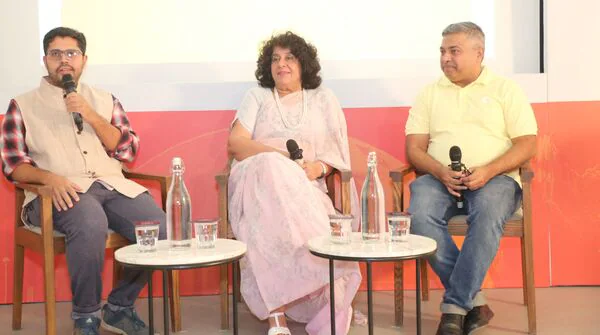At the recent Mint Horizons masterclass in Bangalore, a compelling narrative emerged around the urgent need for Indian investors to look beyond domestic markets and embrace a global perspective on wealth, education, and opportunity.
The event brought together experts from fintech, wealth management, and immigration, each highlighting why global exposure is no longer a luxury—but a necessity.
“There’s a lot of noise, but very little guidance”
Kicking off the conversation, Neil Borate, Deputy Editor at Mint, remarked on the overwhelming growth in financial content—but also on its limitations.
“There’s a huge growth in people speaking—brokers, influencers, content creators. But when it comes to overseas investing, real guidance is still missing. That’s the gap we’re trying to fill,” he said.
A Stock Market Surge Rooted in Constraints
Neil shared a sharp insight into why Indian mid- and small-cap stocks have surged disproportionately in recent months.
“In 2022, when the RBI stopped mutual funds from investing overseas, all that money was forced into Indian equities. It’s created valuation distortions. A lot of people don’t connect the dots—but that decision has shaped today’s market risks,” Neil added.
Watch excerpts from the workshop below,
“Most Indians are 100% invested in a 4% market”
Referencing global market data from 1900 to now, Neil emphasised the over concentration of Indian portfolios. “India isn’t even a visible color on the global market cap map. And yet, most of us are 90–100% invested in that tiny dot. Yes, India will grow—but other colours matter too,” he said.
The data was a wake-up call. While India accounts for just3–4% of global market cap, the average Indian portfolio remains almost entirely domestic.
The Power—and Pitfalls—of Global Exposure
The session explored success stories like theMotilal Oswal Nasdaq ETF, launched in 2011.
“I told my father to put ₹5 lakh in 2012—not a huge sum, but we caught the rally,” Neil shared. “The CAGR since launch is 21.88%—significantly higher than the Nifty.”
But he also warned against survivorship bias by citing the HSBC Brazil Fund, which returned-2.74% CAGR in the same period.
“If you had split ₹10 lakh equally between NASDAQ and Brazil, your blended return would still beat the Nifty—and crucially, it wouldn’t be correlated. That’s the true value of diversification,” Neil said.
Deepak Shenoy, Founder of Capitalmind, added context to this volatility, “Markets are cyclical. It’s not about avoiding risk, but about understanding where your concentration lies. Global investing helps smoothen that curve.”





